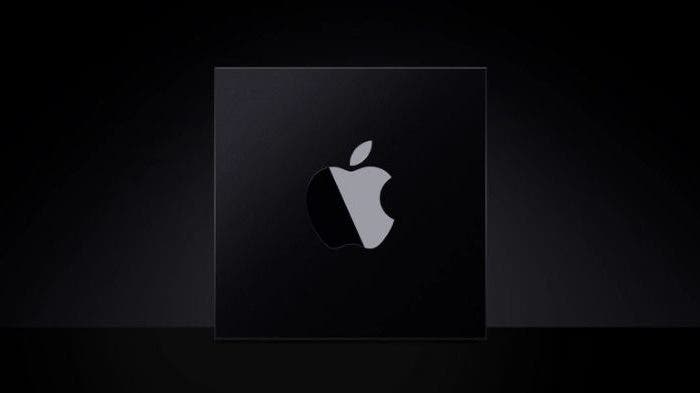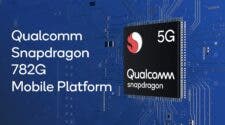Last week, Apple announced at WWDC that its Mac product line will gradually adopt Apple’s self-developed chips within two years, giving up the original Intel processor. This move, on the one hand, has made Apple highly respected in the technology circle. But on the other hand, it has also brought many challenges, such as the possibility of encountering a short-term decline in product sales and solving the compatibility problems of old common tool applications.
Note: At the same time, Apple Mac mini products with built-in A12Z were also introduced to developers to facilitate development and debugging.
It is not difficult to see through the demonstration in WWDC that the Mac currently using Apple’s self-developed custom chips, with macOS Big Sur, can already smoothly run Final Cut Pro, Adobe series suites, and Microsoft Office series suites. Thus, Apple products powered by the self-developed chips can quite smoothly run mainstream software.
Also Read: TSMC Invested 300 R&D Teams To Assist Apple In Developing Mac Chips
Apple even specifically set the version number of macOS Big Sur to 11, which implies a new beginning. The previous version of macOS has been iterated in the order of 10.X. In this regard, Apple CEO Cook said: ‘Apple chips have powerful functions and industry-leading performance, which will make Mac more powerful and efficient than ever.’

According to Apple’s statement, the company will launch the first Mac using Apple’s self-developed chips at the end of this year, and complete the transition within two years. That is to say, after two years, all Apple products will use self-developed chips. But this may also make consumers who are looking to buy Macs a bit difficult.
Disadvantages: Product Sales And Compatibility
Buying a Mac now is a real headache. Many authoritative media say that it is not a good time to buy MacBook products because the products currently on sale still use Intel processors. Mac computers with Intel processors will probably not be able to get all the functional updates of the Mac system after two years. Prior to this, generally, a Mac product could get Apple’s system update for about 6 years. If the life cycle is only 2-3 years, it obviously does not meet the expectations of most consumers.
The adoption of the new Apple self-developed chip makes us think that Apple can launch exclusive new functions for this chip. And Macs with Intel processors will most likely miss the new functions. Consumers only need to wait until the end of this year to have a Mac with a longer life cycle. Even, the current computer with ARM architecture has already been equated with the cellular network connection function. Apple will also likely launch a new MacBook product with built-in eSIM and 5G network support. This will help the Cupertino-based company to get rid of the problem of weak computing power. The latter has been seen on the Core M processor on the 12-inch MacBook.

However, this means that the sales of Mac products have declined. No wonder, before WWDC, Apple has greatly improved the price-performance ratio of MacBook Air products, upgraded the processor for 13-inch MacBook Pro, expanded the hard disk, and added a new GPU option for 16-inch MacBook Pro. All these have been done to attract consumers to buy current Mac products equipped with Intel processors. So it turns out the company has done its best to capture more market share but the latest changes will make those marketing campaigns useless.
Gizchina News of the week
Problems With Windows
Another problem after switching to Apple’s self-developed chips is precisely the productivity link that Apple is focusing on. According to previous data, 100 million Mac users have installed Windows through Boot Camp. Many loyal Mac users also have to install Windows in the computer through a Virtual Machine, Boot Camp or Win To Go. The reason is that they need to occasionally deal with compatibility issues such as backward OA systems and online banking of other organizations. It is required to play some PC games.
However, Macs that have officially adopted Apple’s self-developed chips currently do not support installing Windows through Boot Camp. Also, the way of Win To Go is not hopeful. The reason is that at present, Microsoft only provides an ARM version of Windows 10 authorization to OEM manufacturers. Moreover, Microsoft has no plan to open authorization to individuals. This also means that new Macs that also use the ARM architecture cannot install Windows themselves to solve compatibility issues in the office.
The Virtual Machine software also needs to be developed based on Apple’s self-developed chips. In the demonstration, Apple only used Parallels Desktop to run Linux. And did not mention relevant information about Windows. Virtual Machine software vendors such as VMWare have not yet given a development plan for Apple’s self-developed chip version of Mac.
Advantages: Design Autonomy And Unified Ecology
Macs with self-developed chips will naturally benefit Apple. First, there is autonomy in product design and even pricing. The Apple MacBook Pro and MacBook Air actually reflect the contradiction between Apple’s design concept and Intel processors. The best example is the i9 version of the product that rolled over on the 15-inch MacBook Pro products in 2018 and 2019. On the one hand, Apple’s cooling method could not realize the maximum potential of the Intel i9 processor. On the other hand, it also caused the problem of overheating of the fuselage. Coincidentally, the 13-inch MacBook Air is also unable to exert the performance of the Core 10 generation it comes with. The reason is also stuck in the heat dissipation. Apple has not even added a heat pipe above the processor for the sake of design.

New Design For Mac
Once the Mac adopts self-developed chips, Apple can design any type of body it wants. The performance of the A12Z processor on the iPad Pro has surpassed the Intel processor on the MacBook Air. Interestingly, the iPad Pro is not equipped with a cooling fan. Apple can obviously use self-developed chips to make Mac products thinner and lighter. Also, they may come with longer battery life and more powerful performance.
In addition, through the use of self-developed chips, Apple can also lower the price of Mac products. Some analysts pointed out that the price of Apple’s self-developed chips using TSMC’s 5-nanometer process will be about $75/chip. It is only a quarter of Intel processors. This also means that Apple can even use the huge price advantage to attract consumers to choose Mac products with self-developed chips.
Ecology
In terms of Apple’s own ecological construction, the company has stated that after replacing the self-developed chip, it will be possible to establish a common architecture across all Apple products. Simply put, developers can easily convert applications to run on self-developed chips. Also, they can migrate iOS and iPadOS applications to Mac without any modification.
Through the beta version of macOS Big Sur, Apple has also made the macOS system more unified with iOS and iPadOS. This statement is especially true for UI and UE. The system icons, operation interface, and operation logic are more the same. Even it has made changes for macOS to support touch operations in the future.
Conclusion
10 years ago, Apple held a conference with the theme of ‘Back to the Mac’. Jobs brought the Lion system that let OS X and iOS interpenetrate at that time. Then, it began to transfer a large number of excellent features of the iOS platform to the Mac. At the same time, it also released a new MacBook Air that is more portable and can be called ‘classic’. It is still serving many people. Ten years later, Cook apparently started the ‘Back to the Mac’ 2.0 program. But will it become ‘more classic’?





